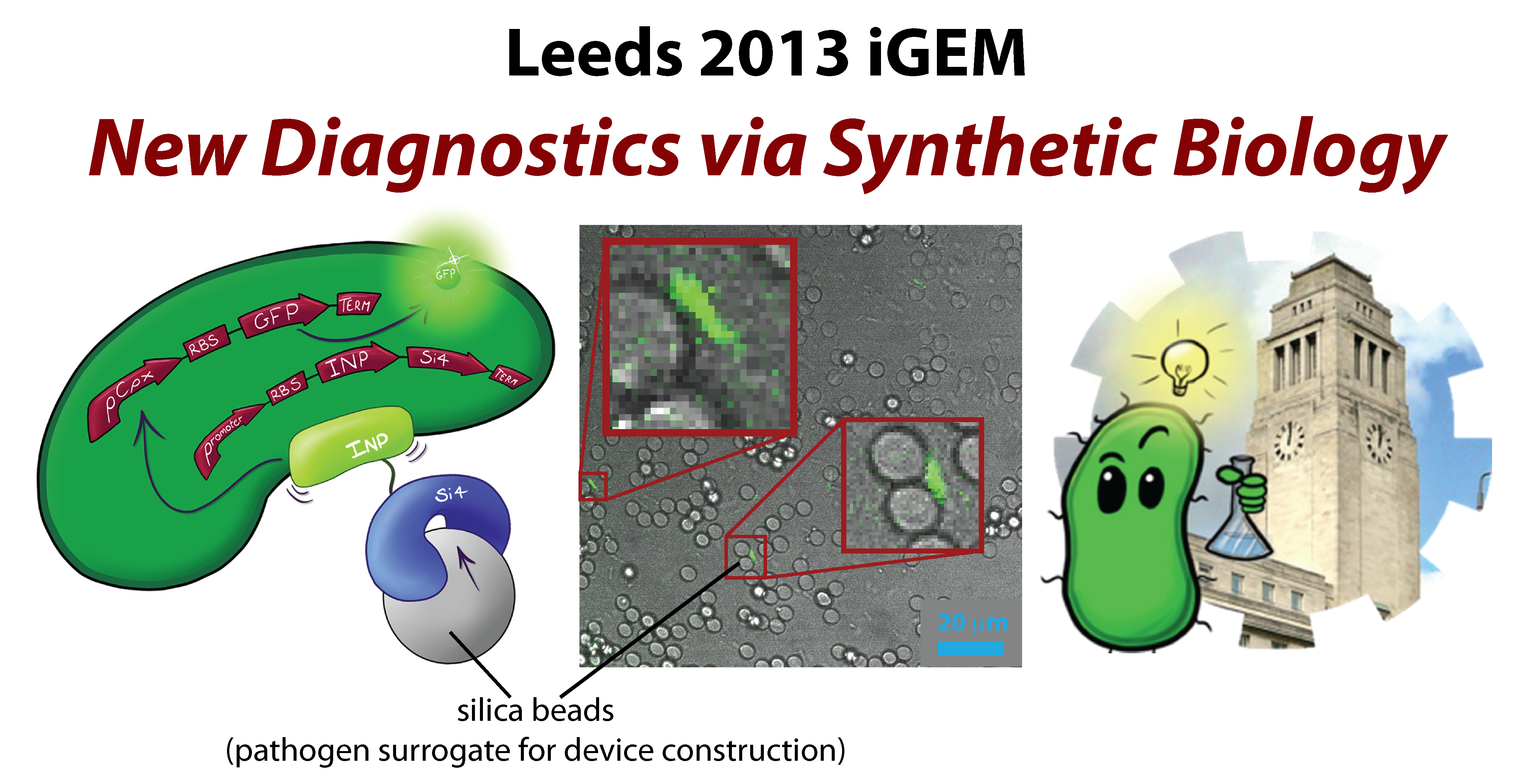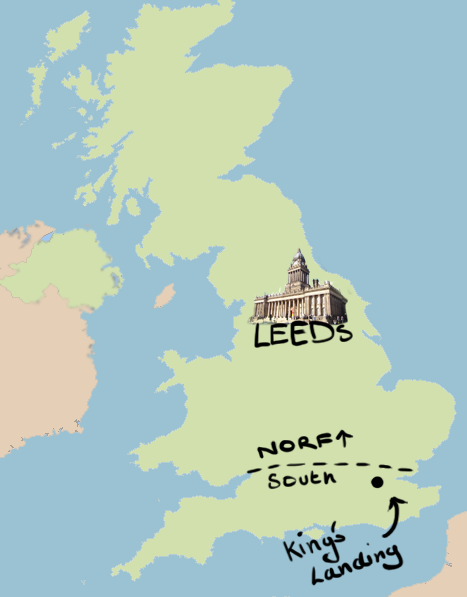Team:Leeds
From 2013.igem.org
(Difference between revisions)
| Line 10: | Line 10: | ||
[[File:Leeds sooperheader3.png|center|750px|awesome looking header|link=|frameless]] | [[File:Leeds sooperheader3.png|center|750px|awesome looking header|link=|frameless]] | ||
<br> | <br> | ||
| - | + | [[Team:Leeds/Project | <font size="6">The Microbeagle </font>]] | |
| - | <font size="4">A biological system designed to detect the presence of pathogens in water samples</font> | + | <br> |
| + | ==<font size="4">A biological system designed to detect the presence of pathogens in water samples</font>== | ||
<br> | <br> | ||
Micro-Beagle is a novel reporter system for E-coli that, as an iGEM first, has been designed to dynamically detect arbitrary target solids (including other cells) through a mechanism activated by cell surface binding. | Micro-Beagle is a novel reporter system for E-coli that, as an iGEM first, has been designed to dynamically detect arbitrary target solids (including other cells) through a mechanism activated by cell surface binding. | ||
<br> | <br> | ||
| - | Micro-Beagle is a modular system, utilising Ice Nucleation Protein to express and position target-binding peptides on the cell surface. Target binding induces membrane stress that activates the Cpx signalling pathway, and Micro-Beagle thus utilises a promoter from this pathway (pCpxR) to initiate expression of a reporter protein, such as GFP. | + | Micro-Beagle was initially developed to address the need for a low cost, energy efficient and robust tool to be used to assess the effectiveness of current water purification systems. As the Micro-Beagle is intended to operate at a low cost it is ideal for use in low-income areas where water testing cannot be maintained at an acceptable frequency. |
| + | <br> | ||
| + | Micro-Beagle is designed to also be a modular system, utilising Ice Nucleation Protein to express and position target-binding peptides on the cell surface. Target binding induces membrane stress that activates the Cpx signalling pathway, and Micro-Beagle thus utilises a promoter from this pathway (pCpxR) to initiate expression of a reporter protein, such as GFP. | ||
<br> | <br> | ||
As a proof of concept, we have used silica beads as a model diagnostic target (a pathogen surrogate) and the silica-binding “Si4” sequence as the target-binding peptide. | As a proof of concept, we have used silica beads as a model diagnostic target (a pathogen surrogate) and the silica-binding “Si4” sequence as the target-binding peptide. | ||
<br> | <br> | ||
We foresee Micro-Beagle being adapted for both the detection of waterborne pathogens and a variety of other diagnostic applications, and we envision future multisensor Micro-Beagles in which diverse pathogens can be simultaneously and quantitatively measured from a single water sample | We foresee Micro-Beagle being adapted for both the detection of waterborne pathogens and a variety of other diagnostic applications, and we envision future multisensor Micro-Beagles in which diverse pathogens can be simultaneously and quantitatively measured from a single water sample | ||
| - | |||
<br> | <br> | ||
| + | The MicroBeagle was initially developed to address the need for a low cost, energy efficient and robust tool to be used to assess the effectiveness of current water purification systems. As the MicroBeagle is intended to operate at a low cost it is ideal for use in low-income areas where water testing cannot be maintained at an acceptable frequency. | ||
Like the Beagle hunting dog chasing hares, our Micro-beagle is a biosensor designed to hunt down pathogens. Micro-beagle utilises the Cpx pathway and GFP, which, when it fluoresces can be seen with the naked eye. | Like the Beagle hunting dog chasing hares, our Micro-beagle is a biosensor designed to hunt down pathogens. Micro-beagle utilises the Cpx pathway and GFP, which, when it fluoresces can be seen with the naked eye. | ||
Revision as of 15:13, 30 September 2013
 "
"











